Mastering piedmontese roasted peppers
Piedmontese roasted peppers are a simple yet flavorful Mediterranean dish that emphasizes the natural sweetness and texture of sweet peppers, enhanced through roasting. This dish is versatile as an antipasto, side dish, or entree and is loved for its vibrant colors and rich, warm flavors. The gentle roasting caramelizes the peppers, producing smoky notes and tender flesh, which pairs beautifully with garlic, olive oil, and fresh herbs like basil or parsley.
The recipe is approachable and well-suited to home cooks aiming for a healthy, vegan, and gluten-free dish. The combination of tomatoes and optional anchovies infuses the dish with layers of umami and acidity, balancing the sweetness of the peppers. Served warm or at room temperature, this recipe shines when enjoyed with crusty bread to soak up the flavorful juices, making it an excellent choice for casual dinners or entertaining.
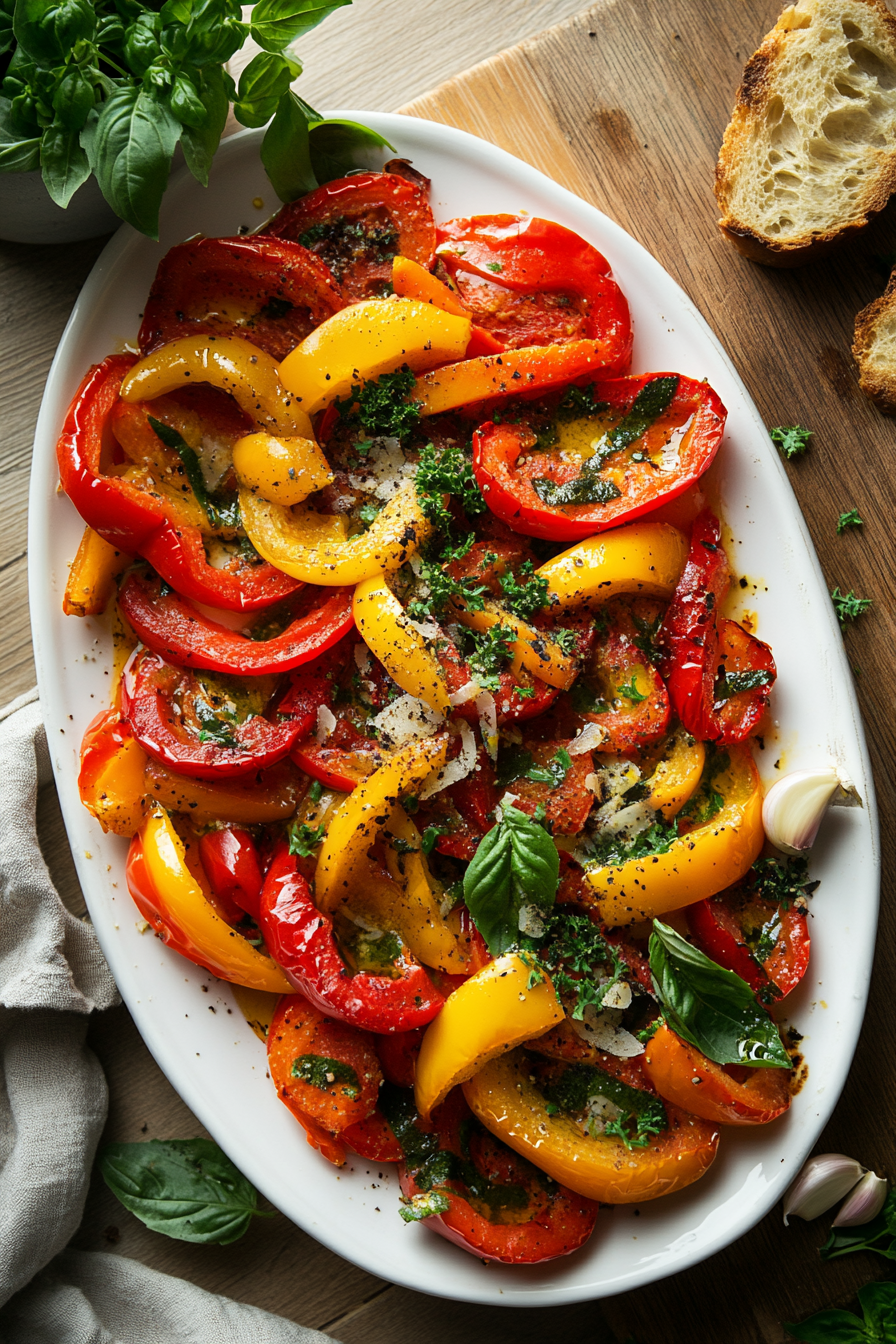
Jump To
- 1. Mastering piedmontese roasted peppers
- 2. Benefits and Advantages of piedmontese roasted peppers
- 3. Essential Ingredients for piedmontese roasted peppers
- 4. Dietary Substitutions to Customize Your piedmontese roasted peppers
- 5. How to Prepare the Perfect piedmontese roasted peppers: Step-by-Step Guide
- 6. Mastering piedmontese roasted peppers: Advanced Tips and Variations
- 7. How to Store piedmontese roasted peppers: Best Practices
- 8. Nutritional Value of piedmontese roasted peppers
- 9. FAQs: Frequently Asked Questions About piedmontese roasted peppers
- 10. Authentic Piedmontese Roasted Peppers Recipe: Discover Traditional Flavors in Every Bite
Benefits and Advantages of piedmontese roasted peppers
Ease of Preparation
This recipe requires minimal ingredients and effort, making it accessible for cooks of any skill level. The roasting process is straightforward and delivers maximum flavor with little hands-on time.
Health and Nutrition
Piedmontese roasted peppers are rich in vitamins, antioxidants, and fiber. Red and yellow peppers provide vitamin C and beta-carotene, essential for immunity and skin health. Olive oil contributes heart-healthy fats, while garlic and herbs add antioxidants and anti-inflammatory benefits.
Versatility
This dish is extremely versatile; it can be served as an appetizer, a side dish accompanying meats or fish, or a light vegetarian main course. It pairs well with various breads like sourdough or ciabatta, making it adaptable to different meals or occasions.
Flavorful and Balanced
The recipe’s combination of roasted peppers, sweet tomatoes, aromatic garlic, and the briny depth of anchovies (optional) creates a balanced, complex flavor that impresses without complexity.
Essential Ingredients for piedmontese roasted peppers
- 4 to 6 small to medium red or yellow peppers (avoid green due to bitterness)
- 2 to 3 medium-sized tomatoes, cut into wedges or cherry tomatoes halved
- 4 to 6 cloves garlic, peeled and thinly sliced
- 4 to 8 anchovies, chopped or halved lengthways (optional for a vegetarian version)
- A small bunch of fresh basil leaves or Italian parsley
- 3 to 4 tablespoons extra virgin olive oil
- Freshly ground black pepper to taste
- Sea salt to taste
Note: Using sweeter red or yellow peppers guarantees the best flavor when roasted, while good quality olive oil enhances the dish significantly.
Dietary Substitutions to Customize Your piedmontese roasted peppers
This recipe allows easy swaps to fit various dietary preferences and ingredient availability while maintaining its delicious character.
Vegetarian or Vegan Version
Simply omit anchovies for a fully vegetarian or vegan dish. To replace the umami flavor they provide, consider adding capers or olives for briny depth.
Herb Variations
If basil or parsley aren’t available, fresh oregano, thyme, or rosemary can subtly alter the flavor, providing new aromatic profiles.
Olive Oil Alternatives
If olive oil is not desired, substitute with avocado oil or a light nut oil like grapeseed. These oils maintain healthy fats and a mild flavor.
Serving Style
Instead of crusty bread, serve the peppers over a bed of couscous, quinoa, or polenta to create a complete and satisfying entree.
Additional Flavor Boosts
Add a splash of balsamic vinegar or a few capers for acidity or salty notes to complement the roasted sweetness.
These simple substitutions make Piedmontese roasted peppers adaptable to various tastes and dietary requirements without compromising the dish’s core appeal.
For a delicious complement, consider serving with our Sweet and Tangy Brussels Sprouts with Cranberry Orange Glaze.
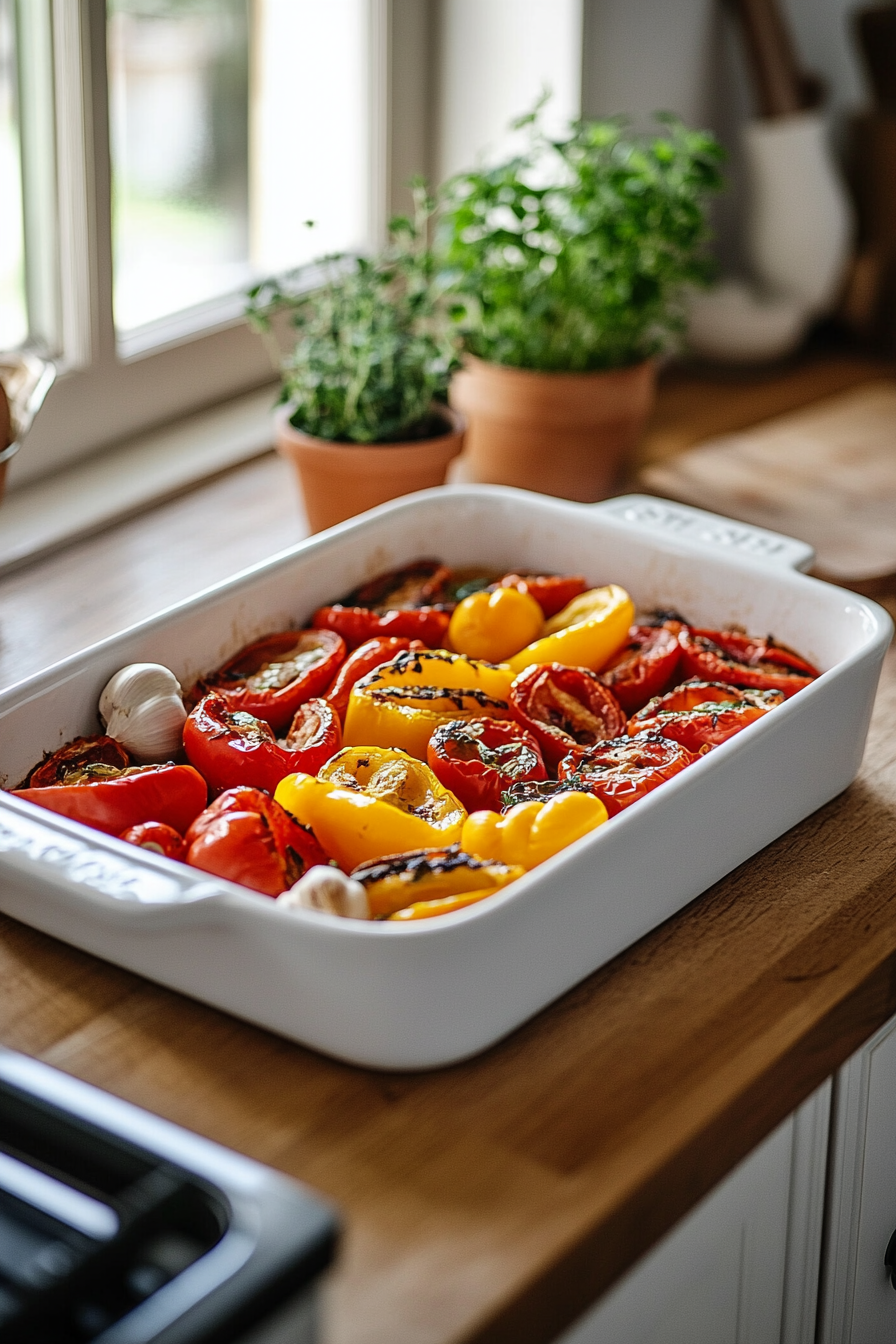
How to Prepare the Perfect piedmontese roasted peppers: Step-by-Step Guide
Preparing authentic Piedmontese roasted peppers is a straightforward process that highlights the natural sweetness and smoky notes of Mediterranean peppers. Follow these steps to create a flavorful dish:
- Preheat the oven: Set your oven to 180°C (350°F) to prepare for roasting.
- Char the peppers: Whole red or yellow peppers (4 to 6 small to medium) should be charred over a stove flame or under the broiler until their skin is blackened. Place them in a covered bowl to steam, loosening the skin for an easy peel.
- Prepare the peppers: Alternatively, halve the peppers, remove seeds and core, then place them skin side down in a baking dish.
- Arrange flavors: Distribute 2 to 3 medium-sized tomatoes (cut into wedges or halved cherry tomatoes), 4 to 6 thinly sliced garlic cloves, and 4 to 8 anchovies (optional for vegetarians) evenly inside the pepper halves.
- Season and oil: Drizzle 3 to 4 tablespoons of extra virgin olive oil generously over the peppers. Season with freshly ground black pepper and sea salt to taste.
- Roast: Cook in the preheated oven for about 35 to 60 minutes, until the edges of the peppers darken slightly and the flesh is tender.
- Serve: Transfer the roasted peppers to a serving dish, pour over the juices collected in the baking dish, garnish with fresh basil or Italian parsley, and serve with crusty bread to soak up the flavorful liquids.
This dish may be enjoyed warm or at room temperature and makes a wonderful antipasto or side.
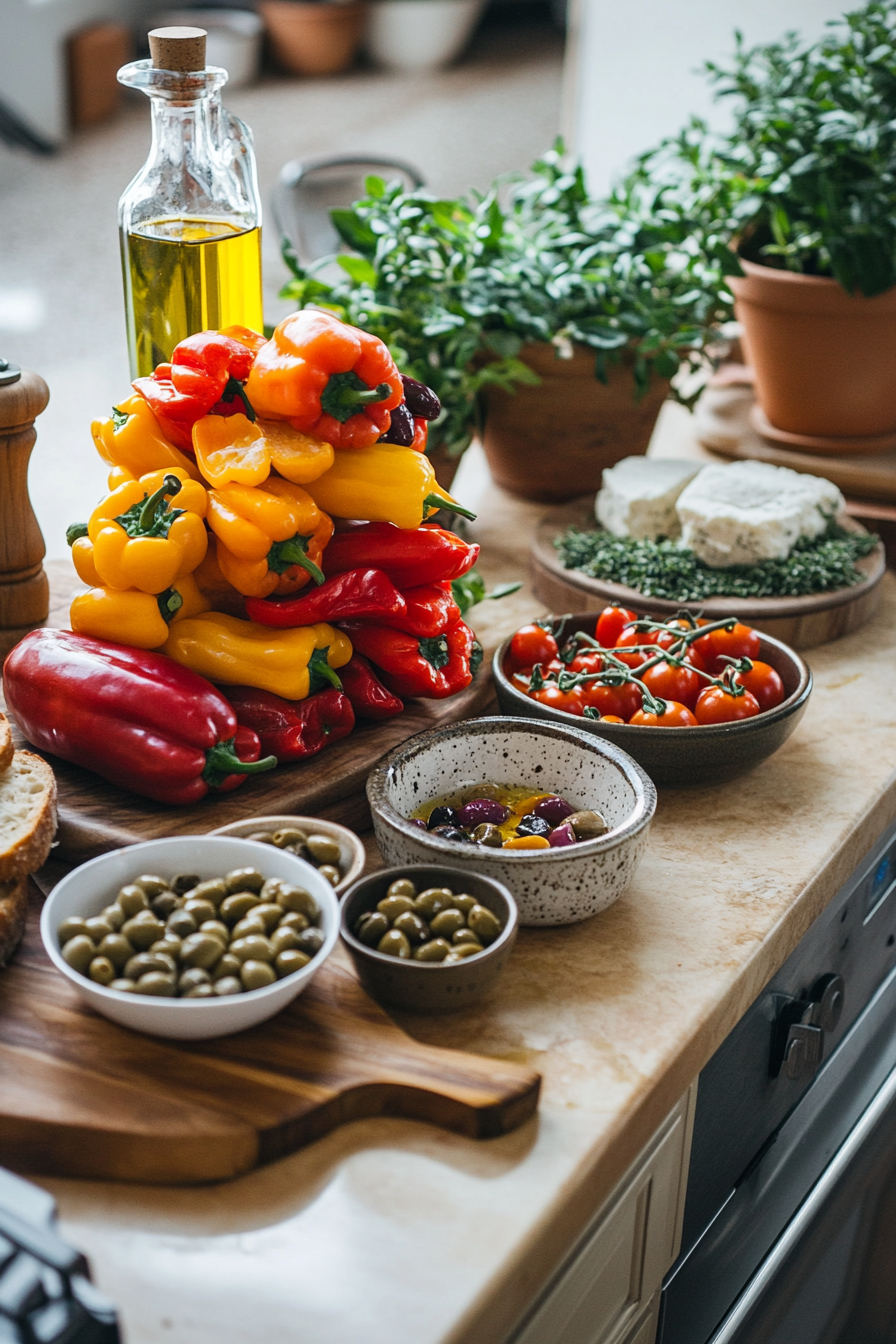
Mastering piedmontese roasted peppers: Advanced Tips and Variations
Once comfortable with the basics of Piedmontese roasted peppers, consider the following tips and variations to tailor the dish to your liking.
Advanced Tips
- Choose sweeter peppers: Opt for red or yellow peppers over green, as green peppers tend to be bitter.
- Quality ingredients: Invest in a good-quality extra virgin olive oil and fresh anchovies to deepen the flavor.
- Peeling technique: After charring, steaming peppers in a covered bowl creates steam that loosens the skin, making peeling easy and preventing loss of texture.
- Flavor layering: Let the roasted peppers marinate in their juices for an hour or overnight in the refrigerator to intensify flavors.
Variations
- Vegetarian version: Omit anchovies and add capers or olives for a salty punch.
- Additional herbs: Swap basil or parsley with fresh oregano or thyme for an herbal twist.
- Spicy kick: Add slices of hot chili peppers or a drizzle of chili oil before roasting for gentle heat.
Such adjustments keep this dish versatile for different palates and occasions.
How to Store piedmontese roasted peppers: Best Practices
Proper storage maintains the flavor and texture of Piedmontese roasted peppers:
- Refrigeration: Keep roasted peppers in an airtight container in the refrigerator for up to 4 days. Cover them with their cooking juices or olive oil to preserve moisture and flavor.
- Freezing: Although roasting breaks down the pepper’s texture, they can be frozen. Store in a tightly sealed container or freezer bag for up to 3 months. Thaw overnight in the fridge before serving.
- Reheating: Reheat gently in a low oven or microwave, though the dish is traditionally served at room temperature.
Nutritional Value of piedmontese roasted peppers
Piedmontese roasted peppers offer a nutrient-dense dish featuring vibrant vegetables and heart-healthy fats:
| Nutrient | Per Serving (approx.) | Health Benefits |
|---|---|---|
| Calories | 120 kcal | Low-calorie, supports weight management |
| Fat | 8 g | Majority from olive oil; heart-healthy monounsaturated fats |
| Protein | 2 g | Contributes to muscle maintenance |
| Fiber | 3 g | Supports digestive health |
| Vitamin C | 75% Daily Value | Boosts immune system and antioxidant support |
The dish is rich in antioxidants from bell peppers and vitamins from garlic and tomatoes. For further reading about bell pepper nutrition, visit Health Benefits of Bell Peppers.
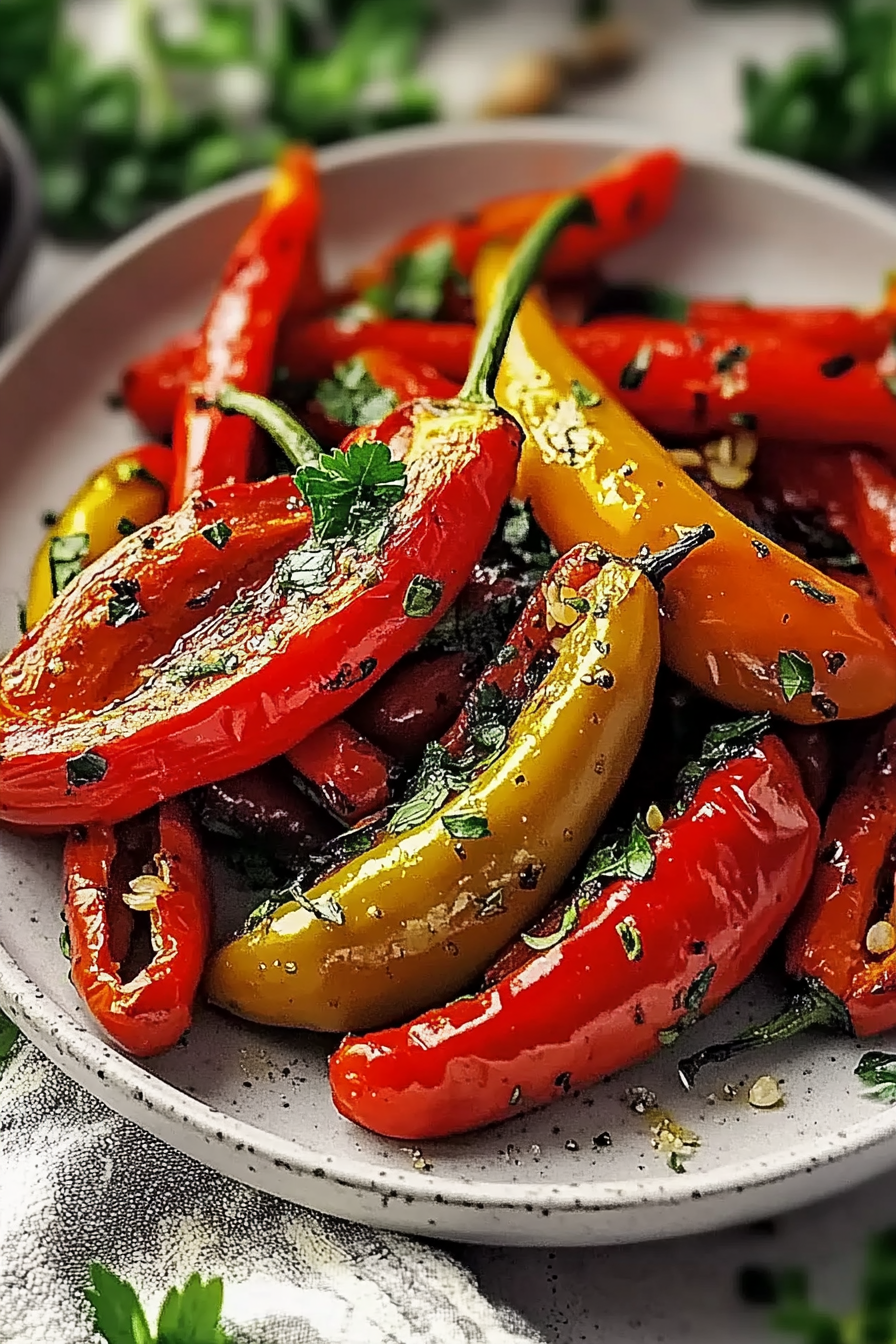
FAQs: Frequently Asked Questions About piedmontese roasted peppers
How far in advance can I prepare Piedmontese Roasted Peppers?
You can prepare the peppers a day ahead. After roasting and peeling, store them in an airtight container with their juices and olive oil in the refrigerator. Season with salt, pepper, and herbs just before serving to keep flavors fresh.
What cheese substitutes work well in Piedmontese Roasted Peppers?
Feta cheese pairs wonderfully due to its salty tang and crumbly texture. For vegan or lactose-free options, plant-based cheeses or marinated tofu can add creaminess without dairy. These alternatives complement the savory flavors beautifully.
Are large peppers suitable for making Piedmontese Roasted Peppers?
Yes, you can use larger peppers by cutting them into smaller, uniform pieces to ensure even roasting. Adjust the cooking time slightly based on size—larger pieces may need a bit longer to soften fully and develop smoky char.
What is the best way to roast Piedmontese peppers for maximum flavor?
Char the peppers whole directly over a gas flame or under a broiler, turning until the skins are evenly blackened. This imparts a smoky flavor that’s hard to replicate. Then steam in a covered bowl for easy peeling. Alternatively, roast halved peppers skin side down. Timing is key—roast until tender and slightly charred on the edges for optimal sweetness.
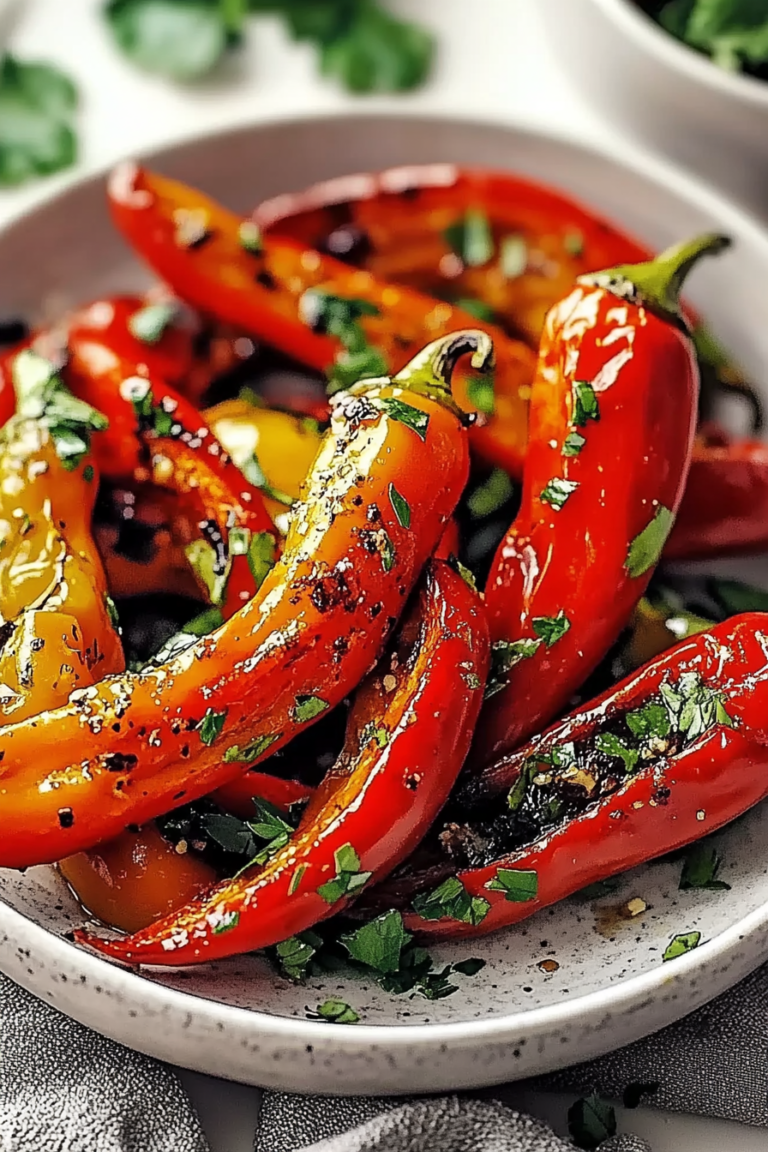
Authentic Piedmontese Roasted Peppers Recipe: Discover Traditional Flavors in Every Bite
🫑 Experience authentic Mediterranean flavors with each bite of these expertly roasted Piedmontese peppers!
🍅 Enhance your meals with a dish that pairs perfectly with crusty bread to soak up every drop of deliciousness.
- Total Time: 85 minutes
- Yield: 4 servings 1x
Ingredients
4 to 6 small to medium red or yellow peppers
2 to 3 medium-sized tomatoes, cut into wedges or cherry tomatoes halved
4 to 6 cloves garlic, peeled and thinly sliced
4 to 8 anchovies, chopped or halved lengthways (optional for vegetarian version)
A small bunch of fresh basil leaves or Italian parsley
3 to 4 tablespoons extra virgin olive oil
Freshly ground black pepper and sea salt to taste
Instructions
1. Preheat the oven to 180°C (350°F).
2. Char the peppers whole over a stove flame or under a broiler until blackened. Place them in a bowl and cover to steam for easy peeling, or halve the peppers, remove seeds and core, then place them skin down in a baking dish.
3. Arrange tomatoes, garlic slices, and anchovies evenly in the pepper halves.
4. Drizzle generously with olive oil, then season with black pepper and salt if necessary.
5. Roast for 35 to 60 minutes until edges are slightly charred and peppers are softened.
6. Transfer to a serving dish, pour over the juices, garnish with fresh basil or parsley, and serve with crusty bread.
Notes
🫑 Tip: Use sweet red or yellow peppers for the best flavor.
🧄 Tip: High-quality olive oil and anchovies significantly enhance the taste.
🥖 Tip: This versatile dish is delicious served with sourdough or ciabatta bread to absorb the flavorsome juices.
- Prep Time: 25 minutes
- Charring/Peeling time: 20 minutes
- Cook Time: 40 minutes
- Category: Appetizer
- Method: Roasting
- Cuisine: Italian
- Diet: Mediterranean
Nutrition
- Serving Size: 1/4 of recipe
- Calories: 150
- Sugar: 6g
- Sodium: 400mg
- Fat: 10g
- Saturated Fat: 1.5g
- Unsaturated Fat: 7.5g
- Trans Fat: 0g
- Carbohydrates: 12g
- Fiber: 3g
- Protein: 3g
- Cholesterol: 5mg







